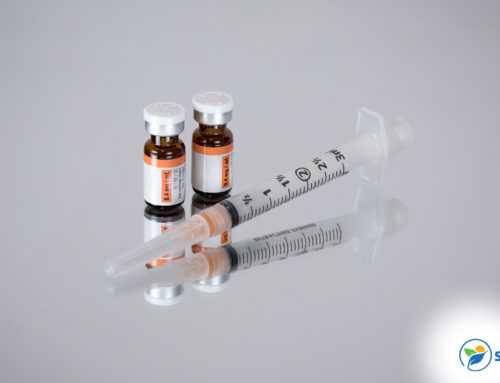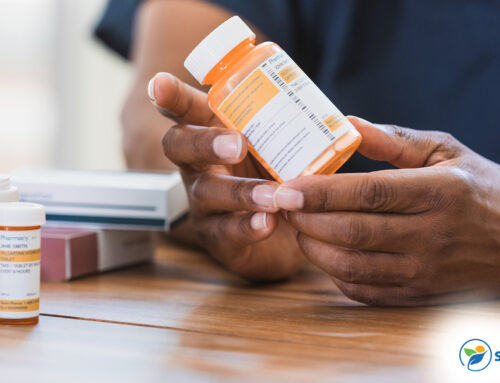Most people have heard of meth and know it’s one of the most difficult drugs to get away from, but few understand just how strong meth cravings can be. If you have a loved one with a meth addiction, you’ve probably wondered, “Why is meth so addictive, and how hard it is to quit meth?” To answer these questions, it’s best to understand why meth is so addictive and get some answers from those who’ve experienced the hell of meth cravings.
How Meth Creates Dependence
Meth use continues to be a growing problem in the United States. Over 2.5 million people used the drug in 2020. Of these, 53% met the diagnostic criteria for methamphetamine use disorder, showing just how addictive meth can be. Meth stimulates the production of dopamine in the brain, leading to feelings of well-being and invincibility and a sense of euphoria considerably stronger than that produced in cocaine users.
Unfortunately, most of the dopamine produced is in areas of the brain that govern reward response, making users want to repeat the experience and reinforcing addictive behavior. Once the high is gone, the drug also interferes with serotonin production, causing feelings of depression that make people who use meth even keener to get another dose.
When use is repeated, the brain becomes less sensitive to the drug, requiring higher doses to get the same effect. This causes people who use meth to move from taking it orally to injecting it. Chances of overdose also increase.
Trying to break free of the drug leads to increased meth cravings. To avoid this, people with a meth addiction might binge to maintain the high, often not sleeping for days at a time. In the words of one former user:
“It started out as something we did rarely, but eventually it overtook everything. Whenever we hung out, we got high. The first three years, I was high every other week. The last two, I was high every day, except for when I would crash after being up for five days straight.”
What the Withdrawal Process Feels Like
There are two ways to consider how meth withdrawal feels. From a purely clinical perspective, the user will experience fatigue and increased appetite, including cravings for high-carb foods, in the first 24 hours. There may also be feelings of anxiety, irritability and depression. Meth cravings will be particularly intense at this point.
The feelings of anxiety will persist after this initial period, and some people go on to suffer from permanent anxiety disorders. Psychosis is also fairly common, where people going through withdrawal will see things and people that aren’t there and suffer from delusions, such as the feeling of insects crawling under the skin. This usually wears off quickly. Feelings of depression can persist for up to three weeks. Again, people who’ve had an addiction for a long time or who took particularly high doses may suffer longer.
Additionally, meth users may feel these symptoms during the withdrawal process:
- Anxiety
- Hallucinations and paranoia
- Feelings of fatigue
- Low energy levels
- Reduced motivation
- Excess perspiration
- Tremors
- Nausea
- Fever
- Sleep problems
- Reduced sexual pleasure
- Dehydration
- Thoughts of suicide
Another way to look at meth withdrawal is through the words of those who’ve experienced it. One Reddit user going through withdrawal put it like this:
“I have not been able to stay awake longer than 20 mins. I sleep, wake up, eat like a monster, sleep. I feel like hell, physically have no strength, sweating ridiculous amounts while I sleep; it’s disgusting.”
For those suffering severe effects from extended periods of heavy use, life can be extremely tough. Another Reddit user said, “I don’t feel happiness anymore. That’s the thing they never tell you in the D.A.R.E. program.”
Fortunately, it’s not that severe for everyone. A person in recovery said: “The hardest part is over in about a week. Three weeks and the physical withdrawal evens out. It took me about 3 years before I stopped wishing for it every now and then.”
Meth Cravings and the Meth Withdrawal Process
The meth withdrawal process can cause a host of symptoms, the worst of which for the user is the intense craving for the drug.
The worst symptoms of withdrawal from meth tend to occur within the 24– to 48–hour period following the user’s last fix. The first two days are usually the hardest for the user as they experience what is called a “crash.” Sweating, abdominal cramping, and nausea are common, and it’s important that this occurs in an inpatient setting where the user can be monitored to assure that dehydration doesn’t occur.
From days three through 10, withdrawal symptoms may begin to peak and then begin to wane. It is during this time that the body struggles to find a new normal without methamphetamine to fuel it. Tremors, shaking and muscle aches are common but will begin to lessen.
From the third through the fourth week, users may continue to experience strong cravings for meth, and depression may begin to gain a foothold along with lingering fatigue. This is a time period when inpatient medical detox and treatment is critical, because the user’s need for support will remain strong for the foreseeable future. In fact, it is not unusual for users to experience the effects of meth for years after their last use. For example, anxiety and depression may linger for long periods of time. A great inpatient treatment center can help the recovering meth addict develop skills to cope without meth in their day-to-day lives.
Why Do Former Users Get Pulled Back to Meth?
As discussed, withdrawal and meth cravings are intense, which draws many users back to the drug even after being sober long-term. Many people who’ve used meth state that they can “never feel happy again.” The reasons for this are complex, but the primary cause is the intensity of the high that meth can offer. Once someone has become used to this kind of euphoria, it’s difficult for anything else to compare, dulling a person’s capacity for joy. This can make it very tempting to use again.
Another reason is meth’s physical effects on the human body. Long-term use has a permanent impact on the brain’s production of dopamine, leading to reduced motor function and impairments to verbal learning. It also affects the areas controlling memory and emotions. Some people who used meth find it hard to do tasks and jobs they used to, leaving a gap in their lives that can lead back to addiction.
Finally, meth addiction is so toxic to a person’s entire life, affecting their social life, career and family life, that there’s often little left for them to return to when clean. Unless they can find something to fill the void, despair can cause them to return to the drug for relief.
How Medical Detox and Inpatient Treatment Can Help With Meth Cravings
Meth cravings can remain powerful for a long time after the initial withdrawal. While a few can manage to quit on their own, it’s a challenging and risky process. Withdrawal without medical supervision can cause serious health problems, and severe withdrawal has been known to be fatal. For these reasons, medical detox and inpatient treatment are essential tools in the fight against meth addiction.
Medical detox allows patients to go through withdrawal with medical assistance, with clinicians prescribing drugs to assist where necessary while monitoring the patient’s health. After that, various therapies including cognitive behavioral therapy (CBT) can help the person in recovery recognize problem behaviors that may cause relapse. Inpatient treatment is particularly important for people who use meth, since cravings are powerful and removing people from the environment where they’ve been using drugs takes away some of the urge to use again.
How to Help Someone on Meth
The best and most effective way of helping someone on meth is to encourage them to go through inpatient treatment that includes medical detox. As a loved one who feels deeply for the addicted person, the topmost thing on your mind is likely how to stop meth cravings so that the person is not suffering through the effects of meth withdrawal. Medical detox is the only safe answer.
It is sometimes the case that addicted individuals who stand to benefit from treatments such as medical detox do not believe that they have an addiction or they may feel that they can’t handle the intense meth cravings that meth addiction causes. The truth is that with an appropriate treatment plan and the right medical intervention, it is possible to recover from a meth addiction.
Learning how to deal with a meth addict is a long, difficult process. Helping the addict find the right recovery options can literally save the user’s life. Let Sunlight Recovery help your loved one regain their life from the clutches of meth. Reach out to our caring and compassionate team now to learn more about the road to recovery for your loved one or for yourself.
If you or a loved one is struggling with meth use, Sunlight Recovery has resources to provide a road to recovery. Call us confidentially at (888) 402-3647 for advice from one of our trained clinicians.






